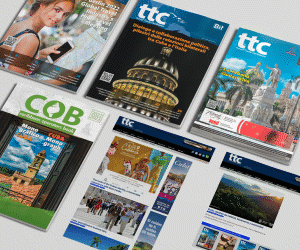By Ricardo Torres, On Cuba News
The Cuban economy was already showing a bleak picture before the start of the current epidemic. Productive activity had been slowing down markedly since 2016. Average annual economic growth in the 2010-2015 period was 2.7 percent, while it dropped to 1.4 percent between 2016 and 2019.
This situation was due to factors such as the economic crisis in Venezuela (main trading partner), the cancellation of contracts for providing medical services (Brazil), the end of the boom in tourism, the limits and contradictions of the domestic economic reform, and the accumulation of new U.S. sanctions. The latter have had a negative impact on several key areas, from trade and foreign investment, to visits by Americans. In 2019, new punitive measures were adopted that affect the sending of remittances, the import of fuel and the activity of foreign companies that operate on the island.
The appropriate pondering of one factor or another, and its precedence, continues to be a topic for extensive debate. Unfortunately, there is an intense politicization, which should be left out when considering different mitigation options by the Cuban authorities. For the average citizen, the clearest symptom of economic problems is the increasing shortage of products of all kinds, including essential items such as food, medicine and fuel. For 2020, the Cuban government planned a GDP increase of about 1 percent. As recent as it seems, it’s already a matter of the past.
COVID-19’s economic impact
Economic forecasts have become outdated in a matter of two months. The modification of the scenario has been so abrupt that international organizations and specialized entities only now begin to modify their forecasts. All forecasts should be taken with caution, because the uncertainty is very high.
The Organization for Economic Cooperation and Development (OECD) estimates that the decline in economic activity in advanced economies is in the order of 20-25 percent, during the period of general closings. In a moderately optimistic scenario, the effects will be felt mainly in the first half of this year. The almost total closure of the movements of people and key industries for three months may represent a year-on-year drop in GDP of between 4-6 percent, at the rate of 2 percent each month. Those numbers represent a deeper recession than the 2008-2009 one. The effect on the dynamics of the GDP in the year will depend on the magnitude and duration of confinement, on the resilience of demand, and on the implementation of monetary and fiscal incentives. The latter begin to take shape in some large economies such as the United States, Germany, France, the United Kingdom, and Spain. For example, in the United States, the committed fiscal resources are equivalent to 10 percent of the GDP.
By sector, tourism, aviation and those sectors with the largest value chains would suffer the greatest contractions. The World Tourism Organization (UNWTO) estimates that arrivals will fall by 20-30 percent, a proportion similar to that of income. The economies most dependent on the sector will receive a higher impact, such as Spain and Greece in Europe, and the Caribbean in Latin America.
ECLAC identifies at least five channels of transmission of the economic crisis in Latin America. A first channel is the effect of the economic contraction on the main trading partners. Regional exports to China were estimated to drop more than 10 percent. A second channel is tourism. The most important markets for the Caribbean are strongly affected by the epidemic, such as the United States, Spain, Germany, France, the United Kingdom, and Italy. If the travel ban lasts for three months, tourism activity would contract as much as 25 percent.
The interruption of global value chains would generate a negative impact, especially for those economies with the highest level of integration with the latter, such as Mexico. A fourth vehicle would be associated with the fall in the prices of basic products. A consultant highlighted that metals and energy are the most vulnerable groups, in that order. This is due to the contraction in the main clients’ demand. A fifth channel is linked to the scenario of uncertainty that would affect foreign investments, and the deterioration of financial conditions. To this should be added a channel that would especially affect Central America and the Caribbean: remittances. Mass unemployment and declining income in rich countries can reduce the volume of these flows. Inter-American Dialogue estimates that the sending of remittances would drop 5 percent in the period. But this will depend on the duration of the crisis, the speed of the recovery and the magnitude of the supports to sustain the income of families.
The impact on Cuba and the measures announced by the authorities
ECLAC anticipates a contraction of the GDP in the Latin American region of 1.8 percent. Cuba enters this global recession phase with great vulnerabilities that could not be resolved in this last decade of reforms. It can be expected that the island’s GDP will enter negative territory in 2020. In any case, the exacerbation of external financial problems will require some type of debt restructuring. The good news is that the reason is obvious, the bad is that many countries will opt for the same.
A substantial negative impact is inevitable for the island’s economy: open, under heavy sanctions, dependent on tourism, and with no access to any external compensation mechanism in the form of contingent loans from international financial organizations. The delay in the structural reforms, including the transition to a more adequate monetary and financial scheme, will surely weigh even more in the new conditions. This highlights the urgent need to learn the lesson that decisions should not be postponed waiting for “better conditions.” Life teaches that the best moment is the present, little is known about the future.
The Cuban economy will be affected both by the global recession and by the negative effect derived from its own restrictive measures, which must be measured and proportionate. Externally, this crisis represents a worsening of financial difficulties, based on the impact on tourism and the rest of the exports, remittances, and foreign investment. Until February of this year, the arrival of visitors had decreased 16.5 percent. On the other hand, it is too early to know what would be the positive effect derived from the export of medical services; and some drugs such as Recombinant Human Interferon Alpha-2b, which has been shown to be effective in the treatment of COVID-19.
Given this reality, rationing of essential products is an inevitable step to guarantee minimum levels of consumption. Rethinking the priorities for investments and reducing their total volume is reasonable. If the enormous hotel investment was not in correspondence with lineal occupancy levels of the order of 38 percent, in current conditions there is only room for a thorough rethinking of its pace and magnitude.
While increasing food production is a necessity, the success that can be achieved in the short term is debatable. The sector has not stopped being a priority, at least in public discourse since 2008. What has failed is the cocktail of measures, which come from a faulty approach anchored in a paradigm that has demonstrated its inability to overcome limitations. This is the case, not only for agriculture, but for the rest of the economic system.
What can be done?
A key element in the Cuban response is its success in confronting the epidemic, for what it represents in human lives, and in the prospects for a rapid recovery. Several of the sectors that can lead the takeoff depend critically on this objective. If this objective is achieved, the strength of the island’s health system is confirmed. This would positively influence international tourism, the possibility of opening new markets for medical services, consolidating or expanding existing agreements, and drawing attention to the capabilities of the biomedical industry. A milestone has already been reached: sending professionals to First World countries (Italy and Andorra), while new destinations are not ruled out. Of course, substantive modifications are required in the characteristics of these contracts, to make them sustainable over time, complying with the most demanding standards.
Domestically, an extreme situation like this should serve as a catalyst for the transformations that the Cuban model requires. The immediate case is agriculture. Calls to increase agricultural production and import substitution, which are decades old, must be endowed with content. If the essential problem of the sector is one of resources, as is very often suggested, then it seems clear that now it is not going to increase production, however necessary. If better results depend on paralyzing the rest of the economy, we have an even bigger problem. It is high time that the current production and distribution scheme is recognized as a resounding failure, and needs to be reviewed from its foundations. In that review, the private and cooperative sector must be empowered.
Confinement and social isolation have socioeconomic effects that must be taken into account. Some of the governments that are facing huge crises in their countries, such as Italy, recommend “gradual measures, according to the appropriate criteria and proportionality.” This is an even more relevant issue for Cuba, devoid of external compensation schemes and with an already precarious economic situation. The ability to implement incentive schemes using the budget is very limited. Both due to the scarcity of resources and the fiscal situation. In 2019, the deficit in public accounts was estimated at 6.3 percent.
In the case of the workers and the self-employed sector, several measures were announced, which implement the current legislation, to protect their income. However, there is one group that requires special attention: self-employed workers. It seems sensible to assume that alleviating the tax burden is not enough to protect their income, which is also that of their families. They are taxpayers, therefore they have the right to some type of protection by the State. Perhaps some kind of soft credit can be considered, shared by their employers in a certain proportion.
Finally, certain macroeconomic balances such as price dynamics were already compromised. Repressed inflation and shortages, primarily due to supply deficits, can only worsen. With the virtual elimination of the individual importation of merchandise, the lack of consumer goods and inputs for self-employment will worsen. And this will only produce additional pressure on inflation.
The authorities already had enough challenges in the economic order. This year promeess to add a few more.
* This article was originally published in Progreso Semanal.

MORE NEWS











